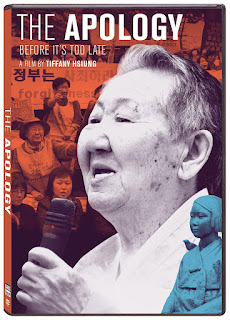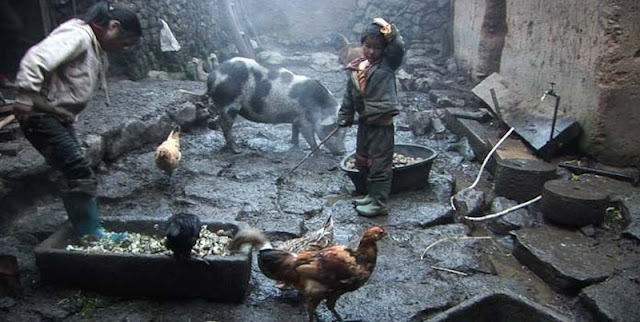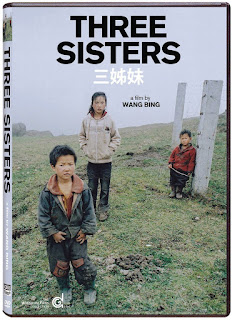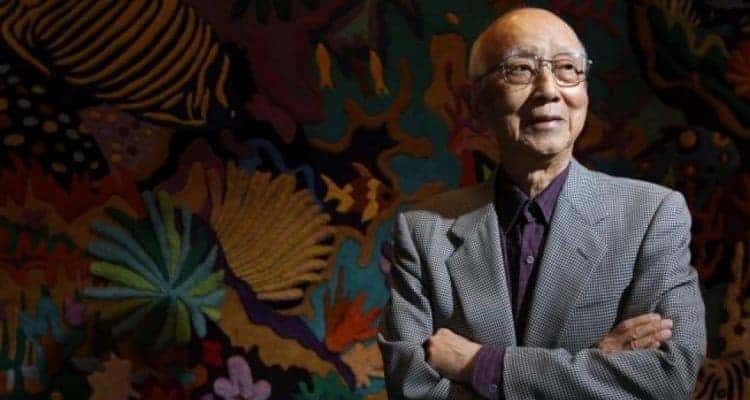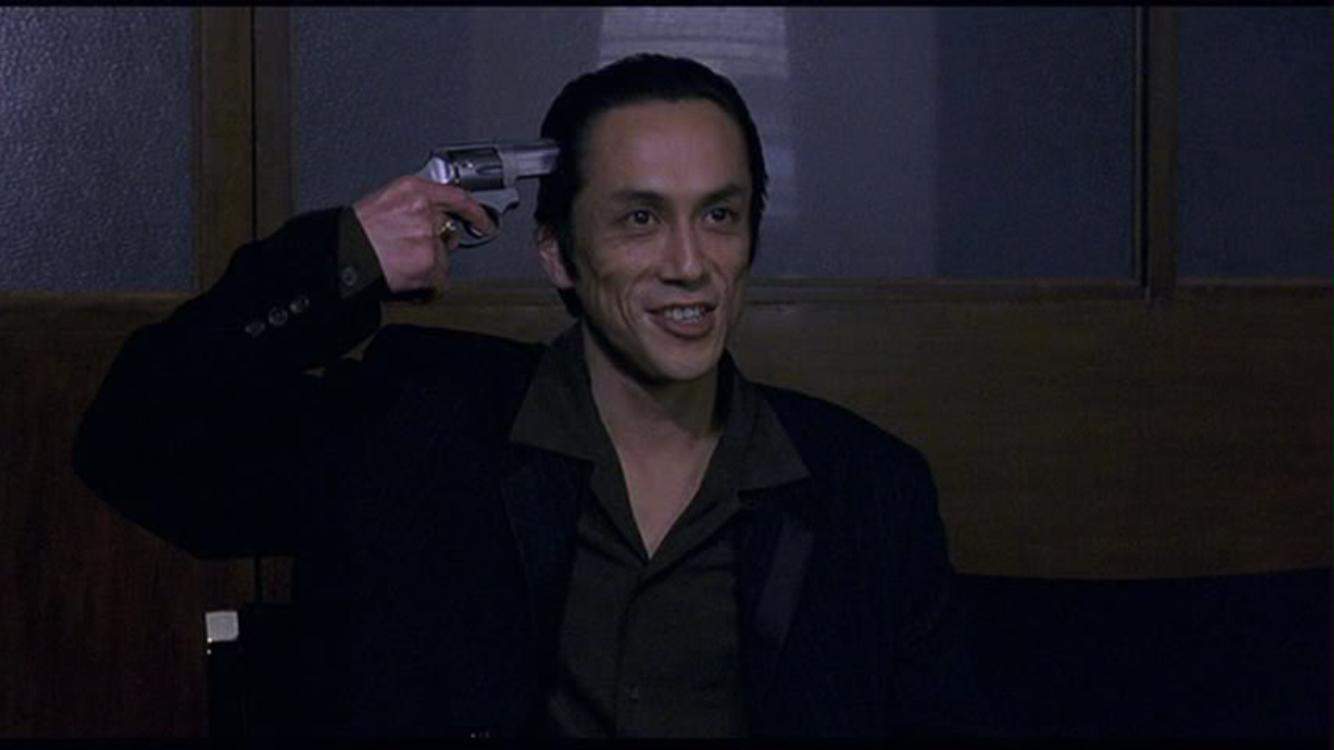4. The Apology (Tiffany Hsiung, S.Korea, 2016)
Winner of the Best Documentary award at the Busan International Film Festival, “The Apology” follows the personal journeys of three former “comfort women” who were among the 200,000 girls and young women kidnapped and forced into military sexual slavery by the Imperial Japanese Army during World War II. To bring “The Apology” to the screen, director Tiffany Hsiung enlisted an all female team (including Mary Stephens, editor of Lixin Fan's film “Last Train Home”). Hsiung drew on devastating personal experience, as well as six years spent documenting the lives of survivors of military sexual assault during WWII.
The result of these efforts is a truly heartfelt, and at the same time infuriating documentary, which looks upon the lives of these women with kindness and sensitivity, but at the same time, paints the Japanese government with the bleakest colors. In that fashion, the documentary shows, in equal measures, the current lives of the three women, all in their 80s or 90s, their stories, and their struggle in order for the Japanese government to acknowledge the war crimes against them and issue compensations. Their agony, as most of them are already dead or of very old age, to receive an apology before they die, is one of the most significant forces that drive them.
Grandma Gil, who lives in S. Korea, is part of a movement regarding the aforementioned issue, whose members have been demonstrating in front of the Japanese embassy every Wednesday, since 1992. She is also one of the most outspoken members, as she travels around the world, speaking on behalf of the 200,000 young girls across Asia, who were forced into prostitution by the Japanese Imperial Army. Her courage and lucidity, despite her age and her health issues, is truly inspiring. Furthermore, the reactions from the Japanese are shocking, although radically opposite. When she talks about her story in an all female school in Japan, there are a number of students who burst into tears, after hearing what she had to go through. On the other hand, during a demonstration of their organization in Japan, there are a number of right-wing protesters (and mere citizens) who call them “whores” that only care about money, in a truly shameful and infuriating attitude.
Grandma Cao lives in a remote village in rural China, and insists on living alone despite the pleas from her daughter, who is unaware of her mother's story. She refuses to talk about her trauma as a “comfort girl” but when she does to the documentarian, her story is truly devastating, particularly when she talks about the two times she had to give birth.
Grandma Adela in Roxas City has been keeping her story a secret for years, both from her husband and her children, due to the shame and social prejudice regarding women who have been raped,. This silence has traumatized her, although she has found support in a group of women who are also survivors. There are three very strong scenes in her segment. The one where she revisits the house that functioned as a “relief station”, the one where she confesses the truth in her deceased husband's grave, asking his forgiveness for keeping it a secret, and the one where she does the same with her son.
Despite the overly dramatic essence of the documentary, the resolve and occasional feistiness of these women provides a number of scenes that produce smiles, lightening the mood of the feature on occasion. In that fashion, Tiffany Hsiung manages to give an entertainment aspect to the documentary, without detracting of the seriousness of the subject in any way.
Buy This Title
5. Bamseom Pirates Inferno (Jung Yoon-suk-I, 2017, S. Korea)
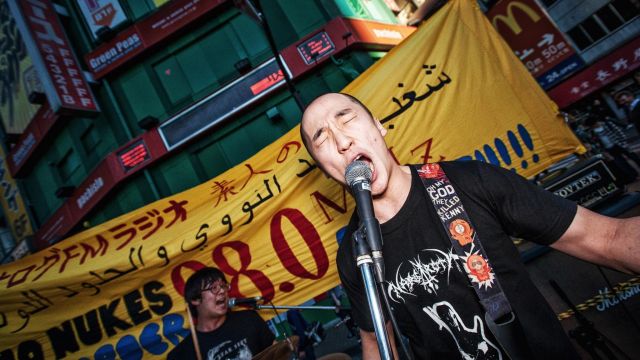
“Bamseom Pirates” is a band consisting of bassist Jang Sung-geon (aged 29) and drummer Kwon Yong-man (aged 31). Their music is an extreme mixture of grindcore and punk, not to mention they frequently combine their music with the breaking of things. However, what set them apart and eventually garnered great attention towards the duo is their song titles and lyrics, with “All hail to Kim Jong-il” and “I like the commie” being distinct samples.
Jung Yoon-suk-I follows the group from 2010 onward, presenting their unique style while focusing on their characters and the reasons that compel them to do what they are doing. Their live shows are bound to produce some laughs, as they usually start with a number of comments that are hilarious, and since their lyrics are quite hard to understand due to their extreme vocals, they use PowerPoint presentations, which are, at least, equally funny. However, under all this humour lies a pointy critique of the state, and particularly the way the relations with North Korea affect the laws and the general mentality of the country. In this fashion, their songs are inspired of actual events and incidents, like the talks between the leaders of the two Koreas that ended up in offensive dialogue or the arrest of their friend and producer, Park Jung-geun, for -tweeting messages from the North Korean account “Uriminzok”. This last episode also ends up in the biggest crisis of their career.
Jung Yoon-suk-I retains an impressive balance between their humour and their political and social ideas, as both are presented through a number of interviews and live performances usually associated with protests, such as against the Korea–US Free Trade Agreement, the construction of a naval base on Jeju Island and the 3/11 Fukushina Daiichi nuclear disaster. One of the most shocking sequences is the one when, during a concert in an anti-eviction demonstration in an underground facility construction, construction companies send paid rioters and armed thugs to break it up, while the police does not intervene. The Pirates, though, manage to joke even for this episode.
The various interviews with the duo are quite interesting, as their social and political thoughts are revealed, again in a combination of humour and seriousness. I could not help laughing when Jung Yoon-suk-I asks Kwon Yong-man about his lack of ambition and he replies, “My ambition is to create trashy music and make noise”.
6. Mrs. B. A North Korean Woman (Jero Yun, 2016, S. Korea)
Winner of the Best Film of the Documentary Competition in Moscow and Best International Documentary Film in Zurich Film, “Mrs B” is a very impressive documentary, shot in true guerilla style.
Jero Yun was conducting a research for North Korean refugees in China for his previous film, “Looking for North Koreans” and spent time with a network of smugglers working between North Korea, China, South Korea and the United States. That is where he met Mrs. B. (whose actual name is not mentioned in the film), who put him in contact with North Korean refugees living clandestinely in China, and eventually in her farm where she told him her story, thus becoming the focus of this film.
The documentary follows Mrs. B's everyday life in China, which is filled with details about the smuggling of people she contacts, to the “underground” trip she takes to S. Korea, to meet her N. Korean family. At the same time, through this trip, Jero Yun presents her life story, through her own words.
Watching this documentary, I was truly shocked with the easiness she explained all that has happened and is still happening in her life. This woman decided to leave N. Korea to go to China, and in her effort, she was sold to the family of her husband in China, where, to make ends meet, she started smuggling drugs, “renting” girls to karaoke parlors and eventually smuggling people, including her N. Korean family to China, and through there, to S. Korea. Mrs B. explains all this with every detail, with a terrifying pragmatism, as she states, “If you are an illegal immigrant, there aren't many things you can do to make money”.
The fact that her life is placed between countries, worlds and families and swamped in illegality does not seem to deter her in any way. The only time she actually shows she is hurt is when her husband, accidentally, gives the wrong dog (of the two they own) to his cousin.
The setting changes much when the documentary is transferred to S. Korea, where the struggles of her family in the hands of the authorities, who consider them spies, are depicted, as is their relationship with her.
The list continues on the next page
7. Holy Island (Aya Hanabusa, 2010, Japan)

Iwaishima Island is part of Kaminoseki City in Yamaguchi Prefecture. On this island in the Seto Inland Sea, the 500 residents have been living by helping each other and sharing things, since that was what was necessary to live in such a harsh natural environment. In 1982, there surfaced a project for constructing a nuclear power plant in Tanoura, on the opposite shore about 3.5 kilometers from Iwaishima Island. The people here have opposed the project since then, saying, “We can only live as long as we have mountains and the sea. We cannot sell the sea during our generation.” “Holy Island” focuses on the struggle of these people and highlights their lives, and the reasons behind their resolve.
There are two, very important issues they have to face in their fight against the building of the plant. The first one is that the majority of the people living in the wider area are in favor of the construction, and even many in the island, in a disagreement that has actually split Iwaishima apart. The documentary actually starts with the city council where the protesters were outvoted. The second issue is that the majority of them are elderly, over 70 even, with the younger amongst them being around 50. This aspect puts their fight in jeopardy, both because it limits them in what they can do, and because the lack of younger people means that there would be no one to continue the fight in a few years. However, both of these aspects do not seem to make any difference regarding their resolve, in a behaviour that makes them seem heroic even, as they struggle against all odds, and at the same induces the film with a certain sense of sadness.
Aya Hanabusa focuses on both the aforementioned and their everyday lives, which is mostly spent in the sea for the fishermen, in the fields for the farmers and for some in the fish-processing plant, although all of them find time to spend with each other. Two scenes stand out, apart from the one in the city council. The one when they protest in the narrow streets of the island wearing headbands (they have even put one on a dog accompanying them) and the one when a new child is admitted to the local school in a very official ceremony, in order to join the only two other students there.
Another point of focus is Iwaishima Island itself, with Chizuna Okubo's cinematography capturing the beauties of the island, particularly in the fields and the sea, with an elaborate combination of artistry and realism. Tetsuo Shinomiya's editing keeps the film flowing, harmonically connecting the different kinds of footage, while Tomoko Saito's wonderful voice provides a narration that functions as the soundtrack of the documentary, among the quietness that permeates the island.
8. The Cinema Travellers (Shirley Abraham and Amit Madhesiya, 2016, India)
The documentary focuses on the lives of three people who are connected to touring cinemas. Two of them run their own touring talkies and a third is an engineer who fixes these projectors. It opens with the running of a projector and the touring company setting up their tents and such, for the night show. The show is held inside a large tent and the projector is inside a truck. The audience sits on the ground. After a delay which angers some of the audience, the movie starts and the audience watches it mesmerized. The portrait shots taken of the audience as they watch the movie captures this feeling brilliantly. These shots are used again in the end.
The touring talkie owners are struggling, due to falling attendance and one of them is reduced to showing semi pornographic movies during the late-night show to boost sales. The spotlight on the engineer offers a different perspective. He talks about the time there used to be long lines in front of his shop by people looking to get their projectors repaired. He offers an interesting perspective about machines, saying that if humans did not understand each other, they would not be able to build machines. He talks about the process of creativity. In the end, the owners are forced to adapt and they end up buying digital projectors and laptops to show their movies.
There are multiple points which ought to be highlighted about this documentary. First and foremost, it is the opening scene. The bright light caused by the wire burning, and then the glow lessening to reveal the projector running is brilliant. It hooks the audience in, instantly. By keeping the focus on three people, two of them touring talkies owners, the directors intends to offer different perspectives on the same situation. Mohammed, the owner of Sumadh Touring Talkies is young and has started from the bottom and is always trying to come up with innovative ways to boost sales. Whether it be the showing of a semi pornographic movie to boost sales or buying a digital system to get better image quality. Bapu, the owner of Akshay Touring Talkies does not want to give up his business. He is not earning much for it and reveals that it is much more than money for him. Though it may seem that the tide of technology will eventually sweep away their business, they still hold on, trying to survive.
9. Golden Slumbers (Davy Chou, 2011, Cambodia)
From the first film ever made in Cambodia in 1960, to the arrival of the Khmer Rouges in 1975, more than 400 movies were produced. After the change of the regime, the movies were banned, the theaters shut down, and most filmmakers and actors were killed, since they were considered enemies of the people. Only 30 films remain today, and a few of the directors who were able to flee the country. Davy Chou, grandson of Van Chann, a famous producer in the 60's and 70's, tries to bring back to life the cinema of the era, through testimonies of the few survivors.
These interviews, which include filmmakers, actors, producers and even film buffs, reconstruct an era long gone, since the only thing that remains of most of the films are the songs that played in them, and some footage. Van Chann's daughter eloquently states that 11 years of her father's filmmaking are now reduced to 12-15 photos, the only mementos left. Most of the old theatres in Pnom Penh have become restaurants, karaoke parlors, and even unofficial asylums for the poor. In that fashion, the documentary emits sadness and a sense of nostalgia for the era, which reaches the borders of the drama, when episodes of grenades thrown in theatres and the general treatment of the industry by the Khmer is revealed.
However, as the documentary progresses, some rays of hope start to appear on screen. Dy Sabeth, the first star of Cambodian cinema is still here, as is Van Chann, Ly Bun Yim, Yvon Hem, both filmmakers, and other members of the industry, who still remember, and are not willing to let people forget. And, as the two film buffs, and some random people from the aforementioned asylum start talking about these films, the fact that their legacy will remain, becomes a certainty. Davy Chou does his part, as, at one point of the film, a famous scene from one of those is restaged with the help of some random youths.
Furthermore, Chou does a very good job of combining the interviews with the minor footage that remains from the era, most of which are audio clips, with the help of Laurent Leveneur's accomplished editing. This elaborateness also applies to Thomas Favel's cinematography, whose framing is impressive at times, even highlighting some of the cinematic techniques used at the time
10. Three Sisters (Wang Bing, 2013, China)
One of the most important documentary directors of his generation, Wang Bing takes another look at the unknown aspects of life in China, in a film that screened in festivals all over the world, winning a number of awards, including the Orizzonti Award at the 69th Venice International Film Festival, where it premiered.
The film focuses on the everyday lives of three sisters, 10-year-old Yingying, 6-year-old Zhenzhen and 4-year-old Fenfen, who live in Xiyangtang, a tiny and almost impoverished rural village in the high mountains of China's Yunnan province (3200 meters above sea level) along 80 other families. The three girls live alone most of the time, since their father is away working in a city, and their mother is out of the picture. Their exhausting lives has them doing grueling tasks for their grandfather or aunt, including herding sheep and pigs, mashing potatoes with their feet to feed the animals, picking dung from the fields, and attending some small fields. YingYing also has to take care of her sisters, and somewhere among all these to attend school and find time to study.
If those were not enough, their living conditions are awful. They sleep in wet beds, since the humidity does not allow them to dry (the village is constantly foggy, with very few sunny moments), with no heat or electricity, in rundown homes where the sun never shines and with a fire almost constantly lit, inside the house. Yingying has a cough that does not seem to go away, Zhenzhen has wounds in her feet from her rundown and constantly wet boots, and Fenfen is filled with lice.
The one who is the saddest, though, is Yingying, who has to care for so many things, including a number of backbreaking tasks, in a life filled with noes. No money, no electricity, no heat, no games, no family, since eventually her father takes her two sisters away in the city leaving her alone because he cannot afford the school tuition in the city, and in the bottom line, no break or hope.



